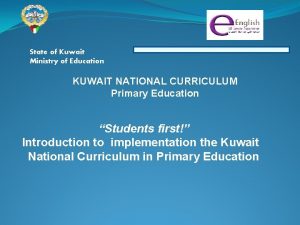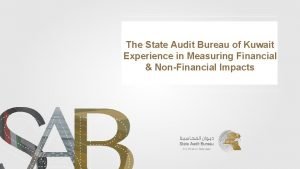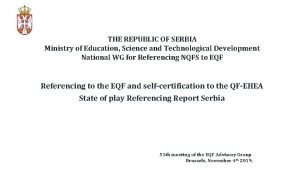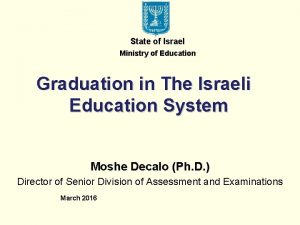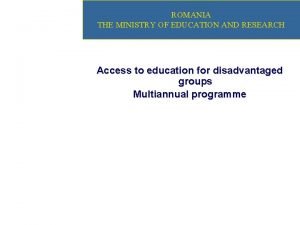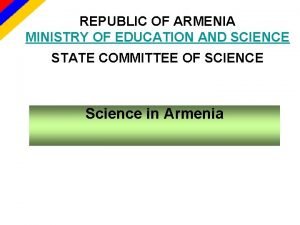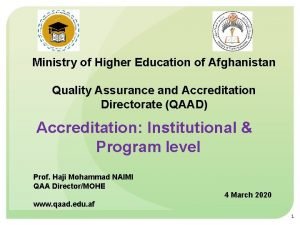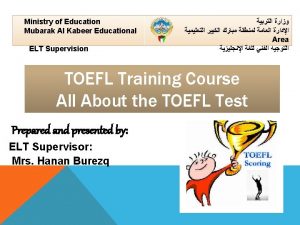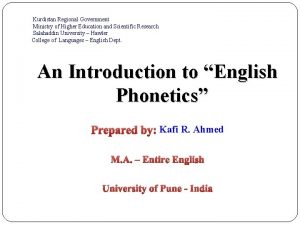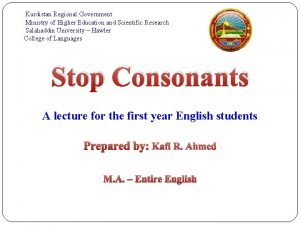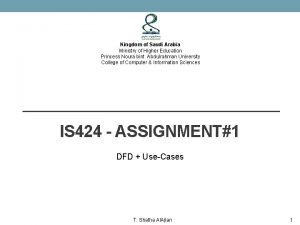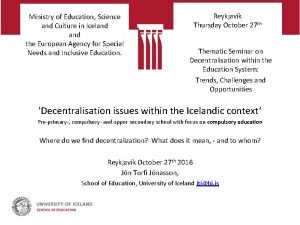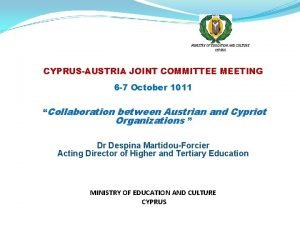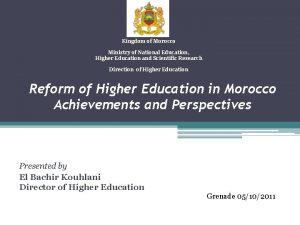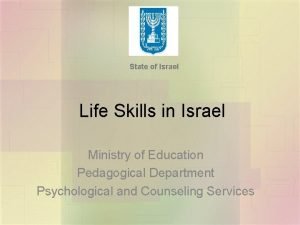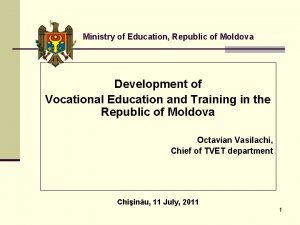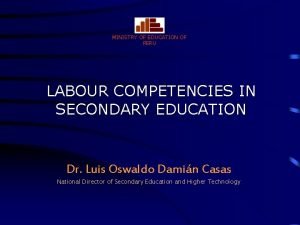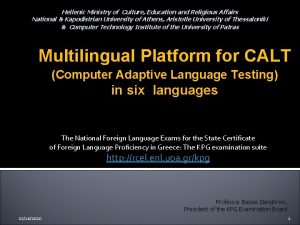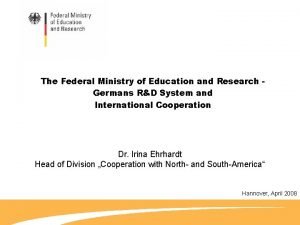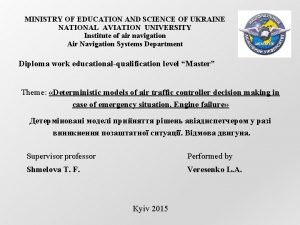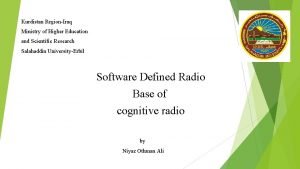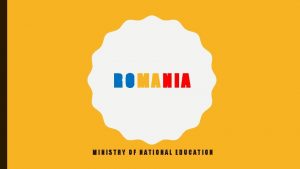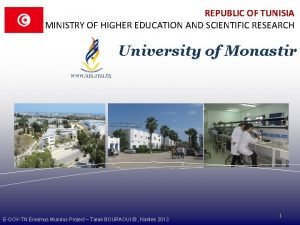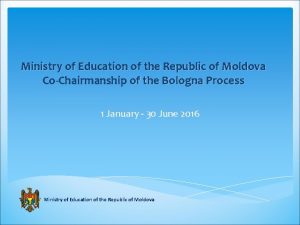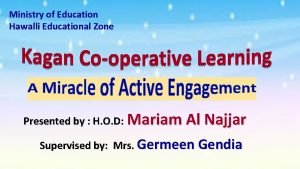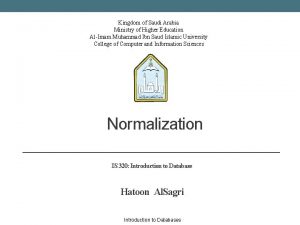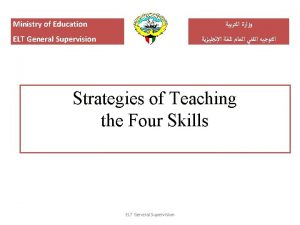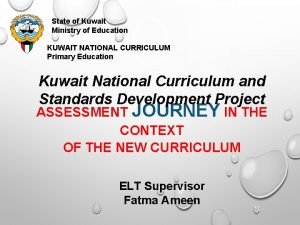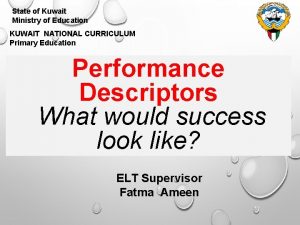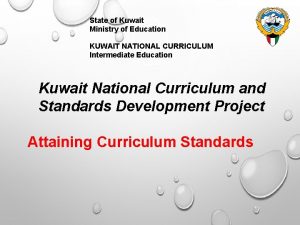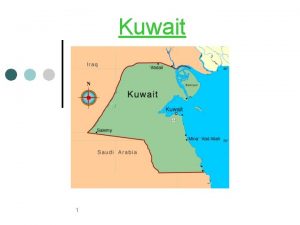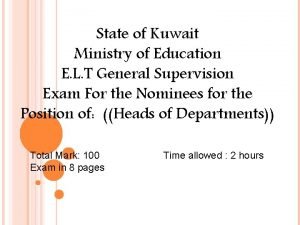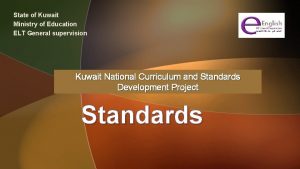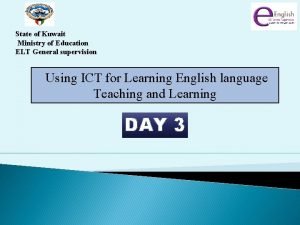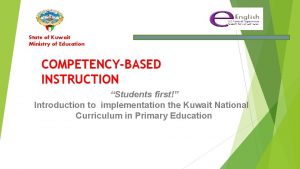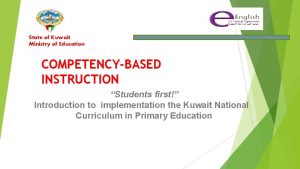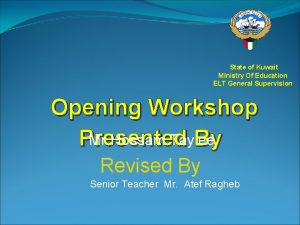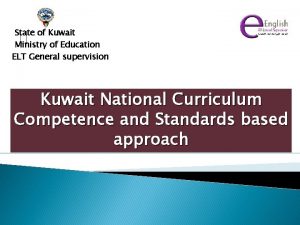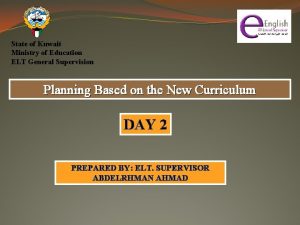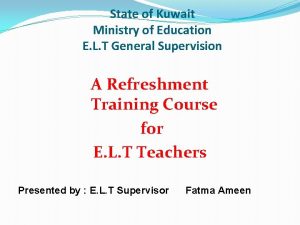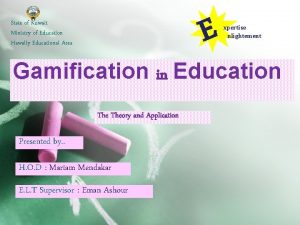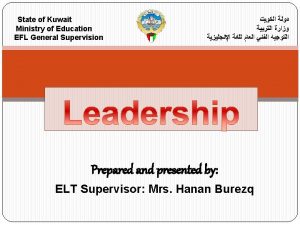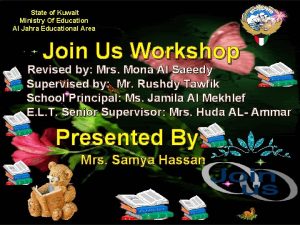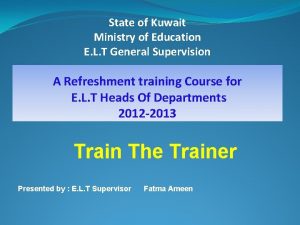State of Kuwait Ministry of Education AlAsema Educational































- Slides: 31

State of Kuwait Ministry of Education Al-Asema Educational Area Al-Asmai Secondary School TEXTBOOK EVALUATION Presented by: Mr. Abdullah Samateh Supervised by: Mrs. Nouria Al-Sedra: ELT Senior Supervisor Mr. Mohamed Kerboushi: ELT Supervisor Mr. Medhat Al-Dahrawi: Head of Department

Contents Introduction Functions of the textbook Need for textbook evaluation Evaluation stages Evaluators Evaluation criteria Practical application Wrap up

FUNCTIONS OF THE TEXBOOK A. The textbook: provides structure and a syllabus for a program. B. The textbook: indicates to teachers and students where they are going, where they are and where they have been.

C. The textbook: provides a variety of learning resources. D. The textbook: is visually appealing to teachers and students. E. The textbook: serves as a stepping stone for novice and less experienced teachers.

F. The textbook: saves teachers’ money and frees them from time consuming task of preparing lesson materials. G. The textbook: specifies teachers and students needs.

H. The textbook: standardizes the teaching practices regardless of the teachers’ various training background. I. The textbook: specifies in advance what is to be taught and what is to be learned.

NEED FOR TEXTBOOK EVALUATION A. To detect the strengths and weaknesses of the textbook in question. B. To judge its relevance to the needs of students, teachers and the syllabus. C. To acclimatize teachers to novel methodology and approaches in teaching. D. To bolster teachers’ professional development and build their confidence.

EVALUATION STAGES: 1. Initial evaluation 2. Detailed evaluation 3. In-use evaluation

INTIAL EVALUTION One way of finding out whether a textbook is worth looking at more closely is to apply the CATALYST test. Communicative Aims Teachable Available add-ons Level Your impression Student interest Tried and tested

DETAILED EVALUATION Detailed evaluation deals with the following questions: Does the course suit your students? Does it suit the teacher? Does it suit the syllabus? Does it suit the social and cultural aspects?

IN-USE EVALUATION This evaluation process should be continuous to ensure that the teacher is the master but not the slave of the textbook.

WHO CARRIES OUT THE EVALUATION? Teachers? Supervisors? Both, in addition to students?

Information about the new textbook is collected from various sources depending on the kind of information needed for the evaluation. Thus, all the concerned parties; teachers, supervisors and students are involved in the evaluation process.

1. Teachers Information about the suitability of the new textbook to the teaching / learning context. Information about students’ development through using the new book. Comments on the teacher’s book.

2. Students Information on how much the textbook contributes to their language development in general. Information about whether the materials have an effect on their motivations and interests.

3. Supervisors Information about the actual use of the new textbook in real classroom situations through observation. Taking bold steps to address the defects, if any. These evaluations can be conducted through tests, questionnaire and observation.

EVALUATION CRITERIA FOR: CONTENTS: (a) vocabulary (b) grammar (c) texts (d) cultural content PYHSICA APPEARANCE VISUAL AIDS

READ THE FOLLOWING CRITERIA AND DECIDE WHICH ONE(S) YOU FIND NECESSARY. 1. VOCABULARY (a) The vocabulary words are presented in an appropriate rate. Necessary□ Unnecessary□ (b) The new vocabulary words are repeated in subsequent lessons. Necessary□ Unnecessary□ c) The vocabulary words used are at the right level of students’ current English ability. Necessary□ Unnecessary□

(d) The vocabulary words used are the ones students will be likely using. Necessary□ Unnecessary□ (e) The essential vocabulary is clearly identified for students. Necessary□ Unnecessary□ (f) Words definitions are presented in the glossary accurately. Necessary□ Unnecessary□

2. GRAMMAR (a) The grammar is presented in logical sequence. Necessary□ Unnecessary□ (b) The explanation is related to the core content. Necessary□ Unnecessary□ (c) The grammar drills with related, contextualized items. Necessary□ Unnecessary□

(d) The grammar is distributed in all chapters at equal rate. Necessary□ Unnecessary□ (e) The essential items are clearly identified for students. Necessary□ Unnecessary□

3. TEXTS (a) The selected texts are representatives of the variety of literary genres. Necessary□ Unnecessary□ (b) The texts reflect real life issues and motivate critical thinking. Necessary□ Unnecessary□ (c) The texts are composed in authentic language. Necessary□ Unnecessary□

(d) the subject matter is presented in logical sequence. Necessary□ Unnecessary□ (e) The texts are relevant to students’ needs as EFL students. Necessary□ Unnecessary□ (f) Sentences and words maintain reasonable length and complexity. Necessary□ Unnecessary□ (g) The text addresses one new concept at a time instead of multiple new concepts. Necessary□ Unnecessary□

4. CULTURAL CONTENT (a) The cultural information is ageappropriate to stimulate interest. Necessary□ Unnecessary□ (b) The information is a broad range and diverse representation of all countries presented. Necessary□ Unnecessary□ (c) The teaching of the target culture incorporates the learners’ exploring of their own culture. Necessary□ Unnecessary□

(d) The cultural information features real life issues in different social settings. Necessary□ Unnecessary□ (e) The cultural contents of texts are not biased. Necessary□ Unnecessary□

5. EXERCISE ACTIVITIES (a) Exercise activities are meaningful, integral, communicative and authentic. Necessary□ Unnecessary□ (b) The activities are controlled, free manipulation and adopt easy-to-difficult process. Necessary□ Unnecessary□ (c) Sample exercises with clear instructions are provided. Necessary□ Unnecessary□ (d) The activities are both reflective and productive. Necessary□ Unnecessary□

6. VISUAL AIDS (a) Authentic and more up-to-date images. Necessary□ Unnecessary□ (b) Related drawings, pictures, coloring, illustrations and variable page layouts. Necessary□ Unnecessary□

7. PHYSICAL MAKE UP (a) Appropriate size and weight. Necessary□ Unnecessary□ (b) Attractive layout. (c) Durable. (d) Appropriate title.

THE EVALUATION MUST TACKLE THE : 1. WHATs…. …. ? Vocabulary: creamed 2. WHYs………? Inaccurate definition 3. WHEREs…. . . ? Book 10 Page 4. HOWs………. ? Alert teachers / correct the wrong

In the light of the above-mentioned criteria, juxtapose books 10 and 12 in terms of : Vocabulary Texts Cultural contents Physical appearance Visual aids

What about ……. . ?
 Ministry of education kuwait
Ministry of education kuwait State audit bureau of kuwait
State audit bureau of kuwait State audit bureau of kuwait
State audit bureau of kuwait Ministry of education serbia
Ministry of education serbia Matriculation certificate
Matriculation certificate Ministry of education romania
Ministry of education romania Ministry of education armenia
Ministry of education armenia Ministry of higher education (afghanistan)
Ministry of higher education (afghanistan) التعليم الخاص مبارك الكبير
التعليم الخاص مبارك الكبير Ministry of education krg
Ministry of education krg Ministry of higher education kurdistan
Ministry of higher education kurdistan Kurdistan higher education
Kurdistan higher education Ministry of higher education saudi arabia
Ministry of higher education saudi arabia Ministry of education iceland
Ministry of education iceland Ministry of education and culture cyprus
Ministry of education and culture cyprus Ministry of education morocco
Ministry of education morocco Life skills
Life skills Ministry of education
Ministry of education Ministry of education peru
Ministry of education peru Ministry of education secondary engagement program
Ministry of education secondary engagement program Hellenic ministry of education and religious affairs
Hellenic ministry of education and religious affairs Ministry of education
Ministry of education Ministry of education and research romania
Ministry of education and research romania Ministry of education
Ministry of education Ministry of education and science of the russian federation
Ministry of education and science of the russian federation Ministry of higher education kurdistan
Ministry of higher education kurdistan Ministry of national education romania
Ministry of national education romania Ministry of higher education tunisia
Ministry of higher education tunisia Ministry of education moldova
Ministry of education moldova Ministry of education zone 1
Ministry of education zone 1 Ministry of higher education saudi
Ministry of higher education saudi Eltsupervision
Eltsupervision
